|
|
5LO38I CRT Tube 5 |
x 1 | |
|
|
12V to 300 V boost converter module |
x 1 | |
|
|
Linear Regulator with Adjustable Output |
x 1 | |
|
|
Resistors and capacitors |
x 1 | |
|
|
Small neon lamp |
x 1 |

|
Soldering Iron Kit |
DIY simplest small CRT Oscilloscope
An oscilloscope is a measuring instrument used to visualize and analyze electronic signals. It is commonly used in various fields, including electronics, telecommunications, engineering, and physics. Overall, oscilloscopes are essential tools for engineers, technicians, and scientists involved in electronics and signal analysis, enabling them to visualize, measure, and diagnose electrical waveforms accurately.

Nowadays, analog (CRT) oscilloscopes are no longer produced, but only digital ones, due to their huge advantages. One of the advantages of analog oscilloscopes is real-time, high-resolution imaging of the signal, and also easier to use than digital oscilloscopes.
In this video I will present to you the simplest possible way to make a retro-style analog oscilloscope with a cathode ray tube (CRT).
A cathode-ray tube (CRT) is a vacuum tube containing one or more electron guns, which emit electron beams that are manipulated to display images on a phosphorescent screen. A CRT tube can be obtained on the Internet for a relatively low price, and depending on the dimensions, it ranges from $20 and up.

And at the beginning, let me say that this is not a serious instrument, but only a demonstration model to describe the way these instruments work.
In previous years, this device has been described in several magazines and portals, but I could not find any pictures or a video presentation of its operation anywhere. So I decided to make it and present the results to you. As the title suggests, the device is extremely simple and consists of several components:
- The main part is the cathode ray tube, and in my case it is a miniature CRT marked 5LO38I with a diameter of only 5cm.
- An electronic part that is extremely simple, and consists only of a few resistors and capacitors.

- LM317 adjustable voltage regulator and two resistors to get the 6.3V needed for the tube heater.
- and power supply - this part is the most common reason why we do not start making devices with electronic tubes. Namely, for their normal operation, high voltages are needed, usually more than 200V, and such power supplies with a classic transformer are bulky and expensive. Specifically for this purpose I used this small compact boost converter which costs only 3 dollars and with 12V at the input gives an output of 45 to 400 Volts, which can be changed continuously with a small potentiometer. The power is quite sufficient for any CRT tube..

And now let's explane how this small oscilloscope works.
The input signal is fed to the Y input via a suitable capacitor to one of the Y deflection plates. For X deflection we use a neon lamp oscillator to generate a timebase, and with a focus regulator circuit we have a complete oscilloscope. Operation of the horizontal deflection oscillator is visible as the gentle flickering of the neon lamp. Whenever the voltage across the parallel-connected capacitor reaches the strike voltage of the lamp, it is discharged with a brief pulse of current. It is hard to imagine a simpler way to generate a sawtooth waveform.
Now, if a signal is applied to the Y input, we should be able to see the waveform on the screen. So, I have shown how little circuitry is required to make a real working oscilloscope.

Let me mention that this device is double isolated from the city voltage network. Once in the external power supply, and the second time in the boost converter.
At first start, it takes a certain amount of time for the cathode to start emitting electrons and an image appears on the screen. Now we will feed the sinusoidal signal generated by this tone generator to the input.

The shape of this signal appears on the screen. We can see that we get a stable image only at certain frequency values because, for the sake of simplicity, the device does not contain a trigger circuit. ( We can also look at the shape of the square wave generated by this small generator. ) If we increase the amplitude of the input sinusoidal signal, the peaks of the sinusoid will be cut off, and thus a trapezoidal signal is obtained.

The device is installed in a suitable box made of PVC board with a thickness of 3 and 5 mm and covered with self-adhesive wallpaper.
Otherwise my intention is to make a simple horizontal and vertical signal amplifier in the future and adapt this small CRT screen for a simple Arduino Oscilloscope clock. Hopefully an oscilloscope clock project will follow soon in one of my next videos.


DIY simplest small CRT Oscilloscope
- Comments(0)
- Likes(7)
-
 Engineer
Apr 29,2025
Engineer
Apr 29,2025
-
 Simeon Ivanov
Dec 28,2024
Simeon Ivanov
Dec 28,2024
-
 Bernd Desens
Sep 22,2024
Bernd Desens
Sep 22,2024
-
 Engineer
May 12,2024
Engineer
May 12,2024
-
 Engineer
Apr 03,2024
Engineer
Apr 03,2024
-
 Francisco Meza
Mar 04,2024
Francisco Meza
Mar 04,2024
-
 Engineer
Mar 04,2024
Engineer
Mar 04,2024
- 0 USER VOTES
- YOUR VOTE 0.00 0.00
- 1
- 2
- 3
- 4
- 5
- 6
- 7
- 8
- 9
- 10
- 1
- 2
- 3
- 4
- 5
- 6
- 7
- 8
- 9
- 10
- 1
- 2
- 3
- 4
- 5
- 6
- 7
- 8
- 9
- 10
- 1
- 2
- 3
- 4
- 5
- 6
- 7
- 8
- 9
- 10
 More by Mirko Pavleski
More by Mirko Pavleski
-
 Arduino 3D Printed self Balancing Cube
Self-balancing devices are electronic devices that use sensors and motors to keep themselves balanc...
Arduino 3D Printed self Balancing Cube
Self-balancing devices are electronic devices that use sensors and motors to keep themselves balanc...
-
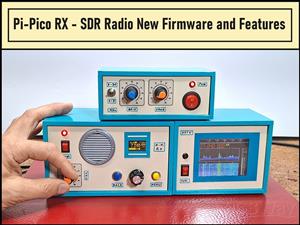 Pi-Pico RX - SDR Radio with New Firmware and Features
A few months ago I presented you a wonderful SDR radio project by DawsonJon 101 Things. In short, i...
Pi-Pico RX - SDR Radio with New Firmware and Features
A few months ago I presented you a wonderful SDR radio project by DawsonJon 101 Things. In short, i...
-
 How to make simple Variable HIGH VOLTAGE Power Supply
High Voltage Power Supply is usually understood as a device that is capable of generating a voltage...
How to make simple Variable HIGH VOLTAGE Power Supply
High Voltage Power Supply is usually understood as a device that is capable of generating a voltage...
-
 DIY 5-Day Rainfall Forecast Device - ESP32 E-Paper Project
In several of my previous projects I have presented ways to make weather stations, but this time I ...
DIY 5-Day Rainfall Forecast Device - ESP32 E-Paper Project
In several of my previous projects I have presented ways to make weather stations, but this time I ...
-
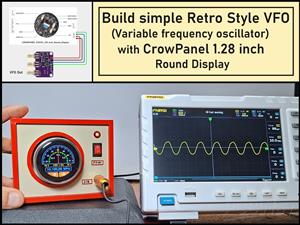 Build simple Retro Style VFO (Variable frequency oscillator) with Crowoanel 1.28 inch Round Display
Today I received a shipment with a Small round LCD display from Elecrow. The device is packed in tw...
Build simple Retro Style VFO (Variable frequency oscillator) with Crowoanel 1.28 inch Round Display
Today I received a shipment with a Small round LCD display from Elecrow. The device is packed in tw...
-
 Human vs Robot – Rock Paper Scissors with MyCobot 280 M5Stack
Today I received a package containing the few Elephant Robotics products. The shipment is well pack...
Human vs Robot – Rock Paper Scissors with MyCobot 280 M5Stack
Today I received a package containing the few Elephant Robotics products. The shipment is well pack...
-
 How to Build a Simple Audio Spectrum Analyzer with Adjustable Settings
An audio spectrum analyzer is an electronic device or software tool that measures and visually disp...
How to Build a Simple Audio Spectrum Analyzer with Adjustable Settings
An audio spectrum analyzer is an electronic device or software tool that measures and visually disp...
-
 How to Make a Digital Clock on a Vintage B&W TV using Arduino
These days I accidentally came across this small retro Black and White TV with a built-in Radio, so ...
How to Make a Digital Clock on a Vintage B&W TV using Arduino
These days I accidentally came across this small retro Black and White TV with a built-in Radio, so ...
-
 Build a $10 Function Generator with Frequency Meter for Your Lab
A function generator is a piece of electronic test equipment used to generate various types of elec...
Build a $10 Function Generator with Frequency Meter for Your Lab
A function generator is a piece of electronic test equipment used to generate various types of elec...
-
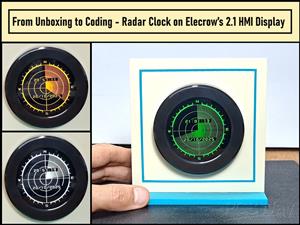 From Unboxing to Coding - Radar Clock on Elecrow’s 2.1 HMI Display
Today I received a shipment with a large round LCD display from Elecrow. The device is packed in two...
From Unboxing to Coding - Radar Clock on Elecrow’s 2.1 HMI Display
Today I received a shipment with a large round LCD display from Elecrow. The device is packed in two...
-
 Making a Retro Analog NTP Clock with Unihiker K10 - Arduino IDE Tutorial
Some time ago I presented you a way to use standard Arduino libraries on the Unihiker k10 developme...
Making a Retro Analog NTP Clock with Unihiker K10 - Arduino IDE Tutorial
Some time ago I presented you a way to use standard Arduino libraries on the Unihiker k10 developme...
-
 Build a Cheap & Easy HF Preselector - Antenna Tuner
HF antenna preselector is an electronic device connected between an HF radio antenna, and a radio r...
Build a Cheap & Easy HF Preselector - Antenna Tuner
HF antenna preselector is an electronic device connected between an HF radio antenna, and a radio r...
-
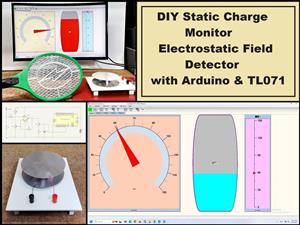 DIY Static Charge Monitor - Electrostatic Field Detector (Arduino & TL071)
A Static Charge Monitor also known as a Static Field Meter or Electrostatic Voltmeter is a device u...
DIY Static Charge Monitor - Electrostatic Field Detector (Arduino & TL071)
A Static Charge Monitor also known as a Static Field Meter or Electrostatic Voltmeter is a device u...
-
 XHDATA D-219 Radio Short Review with complete disassembly
Some time ago I received an offer from XHDATA to be one of the first test users of their new radio m...
XHDATA D-219 Radio Short Review with complete disassembly
Some time ago I received an offer from XHDATA to be one of the first test users of their new radio m...
-
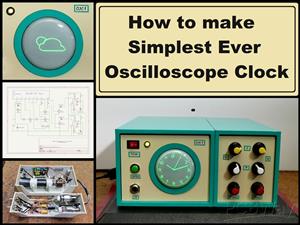 How to make Simplest ever Oscilloscope Clock
An oscilloscope clock is a unique and creative way to display the time using an oscilloscope, which...
How to make Simplest ever Oscilloscope Clock
An oscilloscope clock is a unique and creative way to display the time using an oscilloscope, which...
-
 DIY Digital Barograph with BME280 and ESP32 - 24 Hour Pressure Trends
A barograph is a self-recording barometer that continuously measures and records atmospheric pressu...
DIY Digital Barograph with BME280 and ESP32 - 24 Hour Pressure Trends
A barograph is a self-recording barometer that continuously measures and records atmospheric pressu...
-
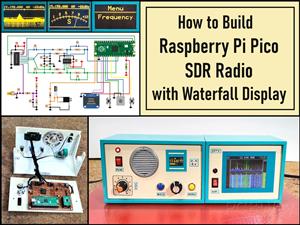 Build a Raspberry Pi Pico SDR Radio with Waterfall Display
Software-defined radio (SDR) is a radio communication system where components that have traditional...
Build a Raspberry Pi Pico SDR Radio with Waterfall Display
Software-defined radio (SDR) is a radio communication system where components that have traditional...
-
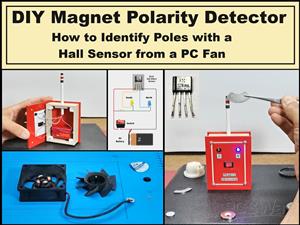 DIY Magnet Polarity Detector - How to Identify Poles with a Hall Sensor from a PC Fan
Recently, while working on a project, I needed to determine the polarity of several permanent magne...
DIY Magnet Polarity Detector - How to Identify Poles with a Hall Sensor from a PC Fan
Recently, while working on a project, I needed to determine the polarity of several permanent magne...
-
-
mammoth-3D SLM Voron Toolhead – Manual Drill & Tap Edition
230 0 0 -
-
AEL-2011 Power Supply Module
755 0 2 -
AEL-2011 50W Power Amplifier
628 0 2 -
-
-
Custom Mechanical Keyboard
823 0 0 -
Tester for Touch Screen Digitizer without using microcontroller
448 2 2 -
Audio reactive glow LED wristband/bracelet with NFC / RFID-Tags
400 0 1 -
-












































